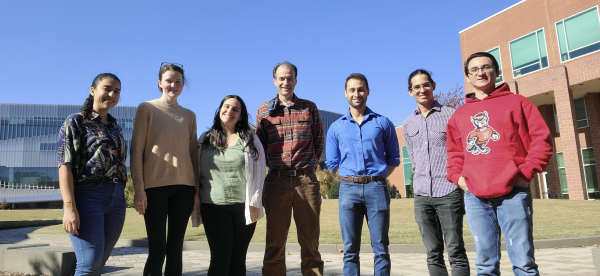
NC State Ph.D. Students Win Blind Prediction Contest Related to Earthquake Engineering Research
A team of six Ph.D. students from NC State University’s Department of Civil, Construction, and Environmental Engineering won the researcher category of the Pacific Earthquake Engineering Research (PEER) Center’s 2021 Blind Prediction Contest. NC State’s team was led by the university’s Dr. Mervyn Kowalsky, Christopher W. Clark Distinguished Professor. There was a three-way tie for the winner of this category. This year’s contest, dubbed “Quasi-Static Cyclic Test of a Reinforced Concrete Column,” focused on predicting the response of a reinforced concrete column subjected to lateral deformation.
“In late September, I received an email from the contest organizer asking me to submit a Blind Prediction for the contest,” Kowalsky says. “I decided to ask my entire group if they wanted to spend an afternoon with me working on it as a group. Almost everyone in the group agreed, and I used it as an opportunity to teach them assessment techniques that rely on engineering judgement, simple models and hand calculations. We spent a couple hours on it, at most — all simple calculations.”
Kowalsky says that their analyses suggested that the column would suffer a brittle shear failure at a rather low level of lateral deformation.
“While we were reasonably confident that we would be close to the correct answer, it was a surprise that we were one of the winners. It’s gratifying to confirm that simple hand calculations that rely on engineering judgment do a good job, especially for simple structures. Instead of reaching for a complex analysis method, it’s often best to start out with simple tools.”
PEER received 116 entries from around the world. The six CCEE Ph.D. students involved in the calculations included Taylor Brodbeck, Diego Martinez, Diego Sosa, Lina Espinosa, Ana Bona and Julio Samayoa. The contest was based on an experimental test of a concrete column conducted in 2020.
“The test column is representative of gravity columns common in concrete buildings designed prior to the 1990s,” according to PEER. “Hopefully the results of this survey will help lead to improvements in concrete building evaluation, with the goal of making our communities safer in earthquakes.”
This article was originally published by NC State University on November 23, 2021. Reprinted with permission from NC State’s Department of Civil, Construction and Environmental Engineering.





